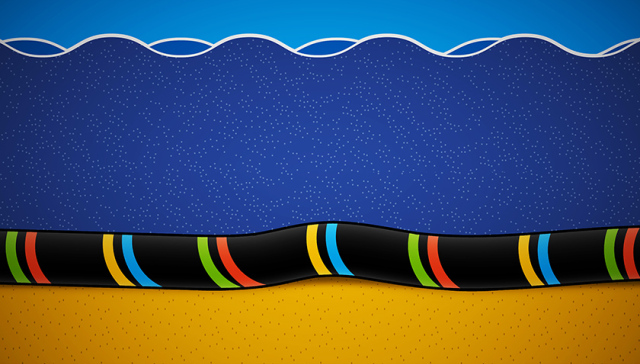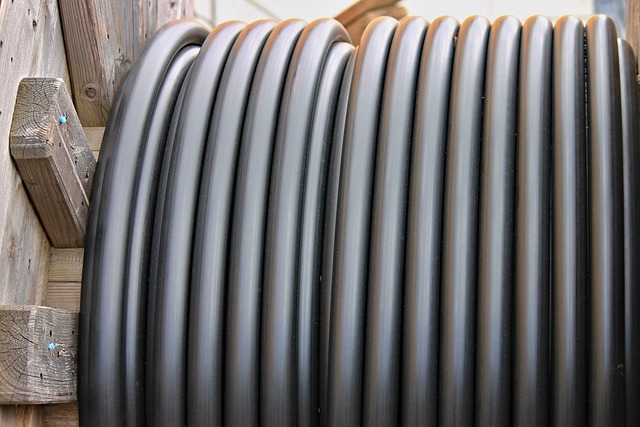What is the relationship between cables and the Internet?
 Jul 17,2024
Jul 17,2024

 Suke
Suke
The Internet in our contemporary society is like an invisible web that closely weaves our world together. This network connects not only individuals but also businesses, governments, and cultures and ideas around the world. And behind all this is the cable as its solid support foundation. Imagine data traveling at the speed of light across these fibers, from your computer to a data center thousands of miles away, to support the ubiquitous video calls, online shopping, and social media interactions in our daily lives. These cables are more than just tools for transmitting data; they are also a link to the world's information and a bridge for cultural and commercial exchange. Their existence has not only changed the way we work and play, but it has also profoundly shaped our social structure and way of life. Therefore, the cable, as the physical support system of the Internet, is not only a triumph of technology but also a symbol of human innovation and connectivity, inspiring us to constantly explore and create future possibilities.
Submarine cable and land cable each play an indispensable role in network support. First, let's look at undersea cables. Submarine cable is a cable system used to transmit telecommunications signals and data on the seabed. It is divided into submarine power cables and submarine communication cables, which play the role of information transmission. Undersea cables carry international and global communications networks that carry telephone, Internet, and other communications signals from one country or region to another. The high bandwidth and stability of submarine cables make cross-border communications fast and reliable, and about 95% of the world's international Internet data traffic is transmitted through submarine cables. It can be seen that submarine cables play an important role in the modern information globalization society, which supports the development and cooperation in international communications, international trade, scientific research, and national security.

At the same time, the supporting role of land cable in the network cannot be ignored; it is an important part of the Internet infrastructure and ensure the transmission of data and network connections. Land cable refers to the telecommunications transmission lines laid on the ground or underground, which are used to connect cities, villages, and various buildings. They are mainly composed of multiple strands of wire, are covered with insulating material, and often have an outer sheath to protect their structure and signal transmission. Land cable can be divided into several different types, including traditional copper cable and modern fiber optic cable. As the backbone of data transmission, land cables carry the majority of Internet data traffic, not only connecting individual users and businesses but also supporting the operation of various Internet applications, such as online video, cloud computing, social media, and e-commerce. In both urban and rural areas, land cable connect users directly to Internet service providers' network centers, enabling global Internet access and use. All in all, Submarine cable, with its stability and high efficiency, has become the main means of intercontinental communication, while land cable ensures the rapid transmission of data within the mainland. Together, they support the operation of the Internet.

The history of cable can be traced back several centuries, from the initial development of simple wires to today's complex communication network. Its development vein records the great progress of human communication technology. With the continuous development of Internet and cable technology, coaxial cable composed of four parts: a center conductor, an insulation layer, a mesh metal shield layer, and an external insulation layer, appears to achieve more efficient signal transmission. When the copper wire as the main material of the cable was unable to meet the needs of high-speed data transmission, fiber-based glass or plastic fiber to transmit data through the optical signal optical communication technology came into being, making the transmission speed of the cable greatly improved and greatly increasing the transmission capacity of the cable in the Internet. speed and performance play a vital role. This complex communication network structure has brought tremendous changes to people's daily lives and work, making the transmission of information more convenient and efficient. At the same time, the rapid development of the Internet has also profoundly affected the cable industry. With the increase in the number of users and smart devices, the demand for high-speed and stable data transmission has risen sharply, driving the continuous innovation of cable technology and the expansion of market demand. It can be said that cables and the Internet promote each other and develop each other.
After introducing the development of cable and submarine cable and land cable, we can see that the future of cable is bright. In the future, with the continuous development of emerging technologies such as 5G and the Internet of Things, the role of cables will be more important. Although wireless technology has been greatly developed, cable still has irreplaceable advantages as a transmission medium, especially in terms of transmission speed and stability. With the continuous progress of science and technology, I believe that the cable will continue to deduce a more wonderful story, connecting the future of mankind.

 Home
Home How To Extend Aerial Bundled Cable?
How To Extend Aerial Bundled Cable?  You May Also Like
You May Also Like

 Tel
Tel
 Email
Email
 Address
Address













